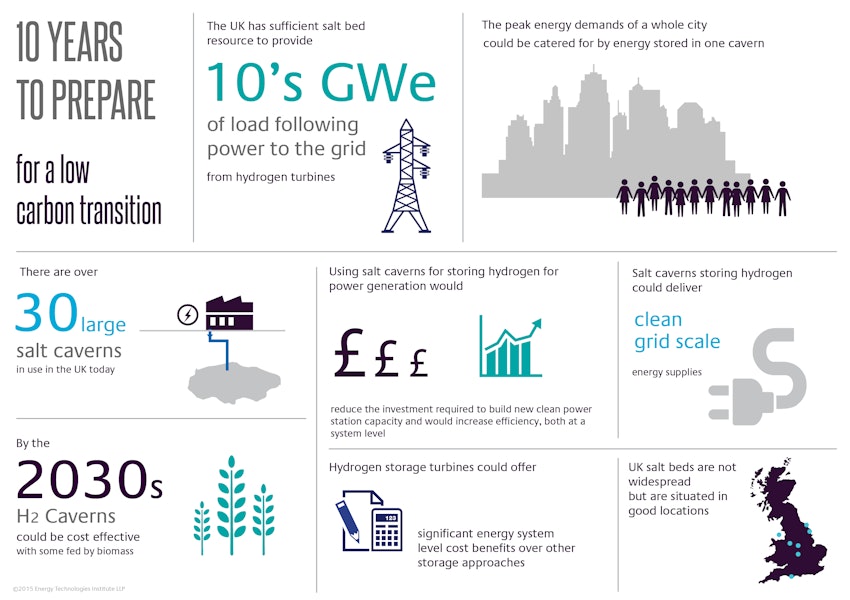The role of hydrogen storage in a clean responsive power system

Dennis Gammer
Strategy Manager
Peak energy demand could be met by hydrogen storage
As the UK invests in lowering its national carbon footprint, more and more renewable power supplies (wind, solar) are being built and put on the grid. However, although clean, these new supplies are intermittent, which increases the need for a low cost ‘on demand’ power supply that currently only fossil fuel plants can satisfy. Power produced from this fleet of fossil fuel plants will diminish and eventually only plants fitted with Carbon Capture and Storage (CCS) will be built. Unfortunately, operating fossil fuel power stations at lower loads reduces their efficiency (more CO2 is produced per MWh) and increases capital costs per MWh produced, both of which are aggravated by fitting CCS equipment.
When run at full load, stations with CCS will offer competitive clean power, but a high proportion of the power we produce (30-40%) is in the load following mode. This must have low emissions if the UK is to reach it’s 2050 climate change targets. Therefore CCS plants must eventually show similar flexibility to today’s mainstay combined cycle gas turbine (CCGT) products, which strive for good start up and low load performance characteristics in addition to ever higher efficiencies. Coal stations have also developed flexibility, with the exception of gasifiers (Integrated Gasification Combined Cycle – IGCCs) which cannot be ramped up quickly and have a limited ability to operate at low load.

Dennis Gammer
Strategy Manager
Dennis Gammer joined the ETI as Strategy Manager, Carbon Capture and Storage in 2010. He has 30 years’ experience in technology development and licensing and is a chartered chemical engineer
